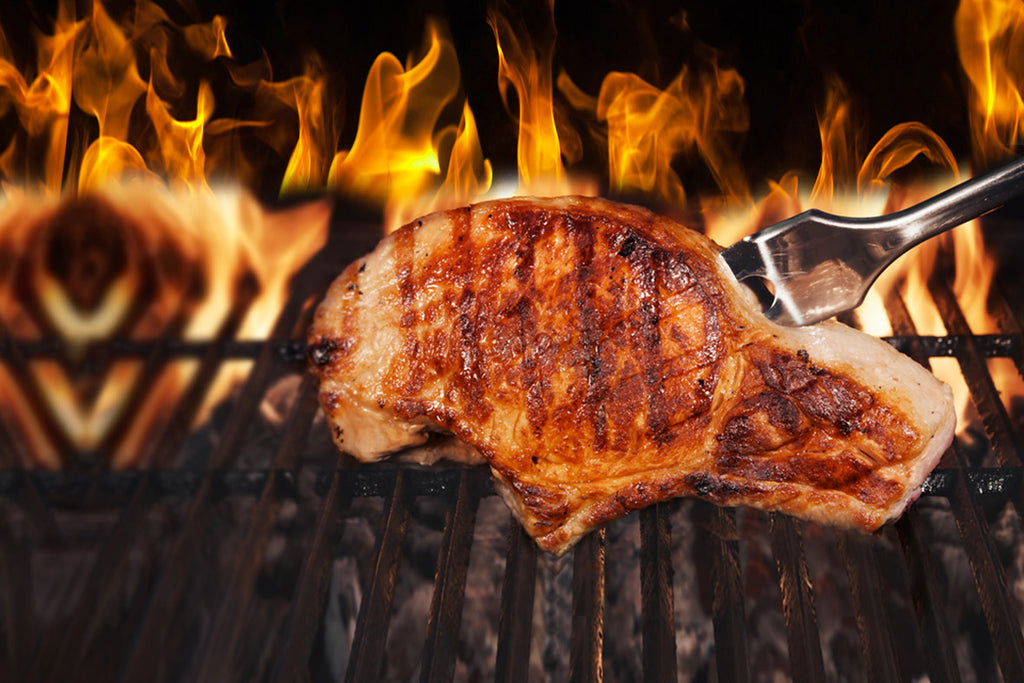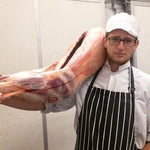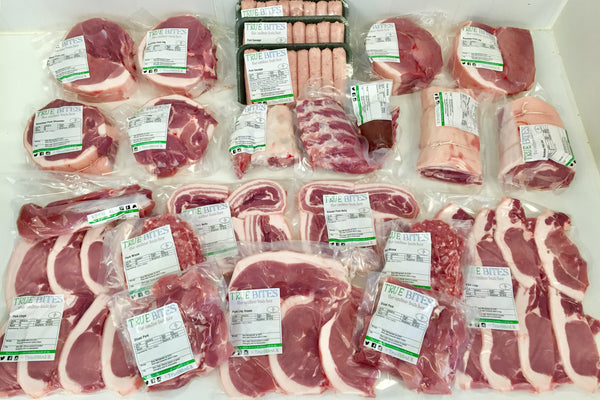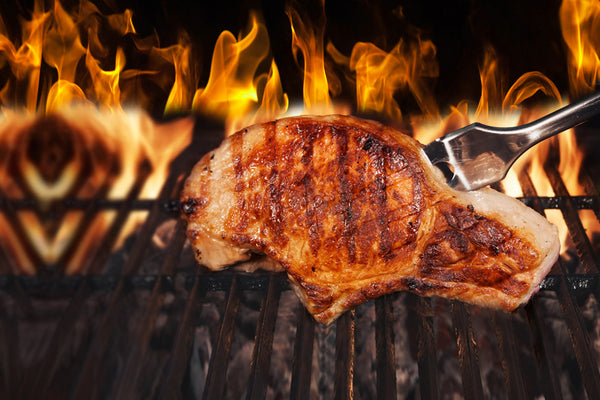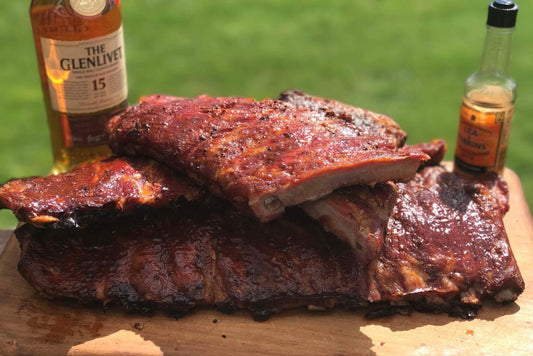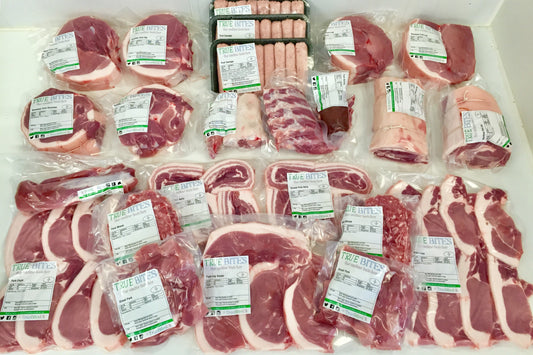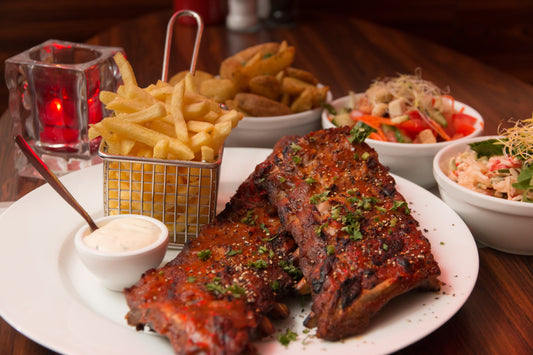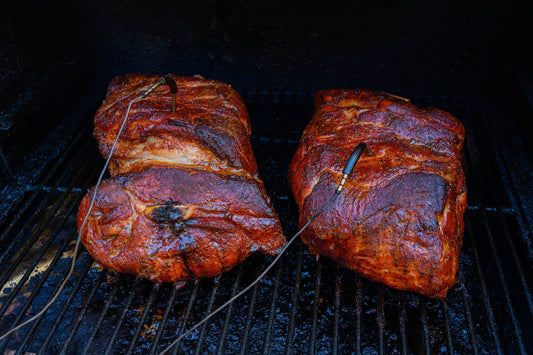First of all it's necessary to say that our Half a Pig Butchers Box is one of our favourite meat boxes to produce. We love breaking the pork down the traditional way, the same way our family has been doing for three generations, and we think it shows, as it's consistently one of our customers favourite products on our online store.
We find our customers love ordering them because; one, they save money by bulk buying, two; they can stock the freezer in one go, which means less time spent on trips to the shop, and three; they get a wide variety of different cuts, which keeps dinner time exciting.
Anyway, we occasionally have customers that want to alter the cuts they receive in their half a pig butchers box, which we always try to accommodate, but which often leads to some long, confusing conversations, about what is actually possible for them to include. For example, if you want t-bone chops in your meat box, then you can't have a pork fillet as well. If you want your loin chops on the bone, then you won't get any baby back ribs. Confused?.. Exactly. This is why we've put together this article to help outline the basics.
What Cuts Do You Get in Half a Pig?
Half a pig, referred to in the butchery trade as a 'side of pork', can be broken down into three basic sections. The front, usually called the 'cross-cut', the middle, and the leg, but to really understand the variety of different cuts you can get, we're going to have to break it down a bit further.
The Cross-Cut
The cross-cut, aka the front, can be split into three primal cuts; the butt, the shoulder and the hock. Let's look into each primal individually.
The Butt
The butt is usually left as a whole roasting joint and is very popular amongst the barbecuing community, but it can also be de-boned and divided up into roasting joint(s), and possibly a few shoulder steaks, although shoulder steaks aren't as fashionable these days.
The Shoulder
The shoulder is usually broken down into boneless roasting joint(s), or on-the-bone roasting joint(s). There's not much else you can do with the shoulder, which is fine, as it's a great joint for roasting and really packs some flavour. The shoulder is especially good if you like your pork cooked low and slow, or if you're making pulled pork.
The Hock
The hock is the hock, you can't really break it down anymore. Again, a less fashionable cut these days, but great for making stews with, or for curing and producing bacon hocks, or even cooking the traditional German dish; Schweinshaxe, which is basically a roasted pork hock (sometimes referred to as pork knuckle).
The Middle
The middle can be split into two primal cuts; the loin and the belly. Let's break this one down a bit more.
The Loin
The loin can be further broken down to return boneless pork loin steaks and/or roasting joint(s), baby back ribs and a fillet, OR on-the-bone chops and/or roasting joint(s). Basically, if you leave your pork chops on the bone, you can't have the baby back ribs, or the pork fillet. Why? Because they are in pieces and attached to your chops.
The Belly
The belly can be further broken into boneless pork belly slices and/or rolled belly roasting joint(s), and a rack of belly ribs, OR on-the-bone pork belly roasting joint(s). Again, if you leave your belly joints on the bone, you can't have the rack of ribs as well.
The Leg
The leg, taken from the back, is basically, well, the leg. Usually, the leg will be butchered with the chump left on, i.e. still attached to the leg. If this is the case then the leg can be further broken down into boneless roasting joint(s) and a whole chump roasting joint. Although, as the chump is basically the pork version of beef rump, you can slice the chump into leg steaks instead if that's what you're looking for.
As a little disclaimer; it is not unusual for the chump to be left on the loin instead of the leg, it just depends on the butcher, or the specification they are working too, but either way it can be left whole, OR sliced into steaks. One or the other.
So there we have it, those are the cuts you can get from half a pig, but it is not to say that those are the cuts you will get from half a pig. Often some of the less fashionable cuts and/or joints will be used for making sausages, or for mince and diced pork etc., so it's not given that you will receive every single different cut of pork from one side of pork.
Thanks for reading and if you have any feedback please leave us a comment below.
